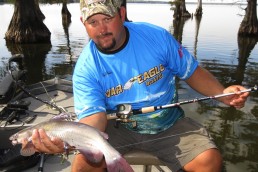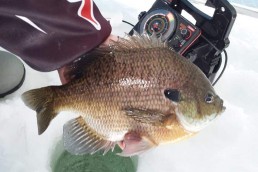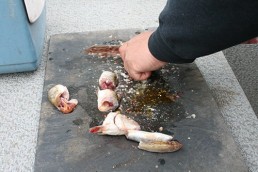Summertime is Prime Catfish Catchin’ Time
SHARE THIS POST
The strong pull at the end of the line says there’s a good channel catfish on the hook. The best way to describe the catfish is a muscle with a mouth on one end and fins on the other. Never one to win a beauty contest, the catfish lives extensively throughout the Mississippi River Basin.
Catfish are probably the most popular species of fish for eating and catching, and every town has its favorite location or event for a fish fry, be it a restaurant, church social, civic function or just someone’s backyard.
In addition to the channels, the blues and flatheads inhabit the big river systems of this country. The Mississippi River for instance is home to all three catfish species.
Channel catfish are a popular fish for stocking programs in lakes. The channel catfish is probably the most popular with anglers and fish-frying patrons. They are in many of the fish farms which dot the lower Mississippi Delta. Channels seek faster water flow and the cleanest of water with sand, gravel or rock bottoms.
Catfish anglers are laid-back fishermen; they tend to prefer a leisurely fishing experience. The rigs are simple with a weight and hook on a line cast to the probable location of fish.
A forked stick sunk into the bank makes a suitable rod holder when looking for cats. Other variations on this theme occur on boats, but the basics are unchanged. Bait used for catfish can be dead or alive and include minnows, leeches, crayfish, catalpa worms, leaf worms, red worms, frogs and cut bait.
Are you enjoying this post?
You can be among the first to get the latest info on where to go, what to use and how to use it!
For the more sophisticated catfish angler, there are other patterns to fish. One especially popular on small rivers and streams during the summer is when the angler wades and uses live bait. It involves fishing live bait below a slip bobber and allowing it to drift downstream over the larger holes, washouts, undercut banks and beneath brush piles and other dark hideouts. The idea is to present a natural presentation of the bait by allowing the current of the water to drift the bait. The bait is set so that it floats just a few inches off the bottom much the same as any other food source for catfish. Good baits for this are grasshoppers, nightcrawlers and crayfish.
During periods of overcast and drizzle, catfish cruise the flats in search of food as much as they would at night. At this time, one can employ a three-way rig. One of the swivels attaches to the line that goes to the rod. The second is attached to a drop line of about 8 inches with a heavy sinker on it. The third swivel goes to a line of about 3 inches with a hook at the end. The bait floats off the bottom and presents the live bait, either a minnow or a leech, in a natural presentation.
Getting back to the more “leisurely” approach, take a look at jug fishing and trot- lining. Jug fishing occurs in water with slow or no current with little or no snags under the surface. The bait suspends below a 1-gallon milk jug and floats. A large number of jugs are usually used and the angler sits back to wait for a jug to move off in a direction that is different from the rest.
Trotlines on the other hand are a line with a series of baited hooks tied on in intervals along its length. The snells are at varying lengths and baited with cut bait. Use varying lengths of snells. The water at all levels from the bottom to the surface are covered with baited hooks. Usually, you tie the line along the shoreline for easy access. Sometimes they will go from shore to midstream. The lines remain overnight or for several hours. Later, once retrieved, you can collect the fish.
Catfish can be finicky, yet do not require a lot of expensive tackle or boats to pursue—that is what makes them king to many. MWO
MWO
SHARE THIS POST
Did you enjoy this post?
You can be among the first to get the latest info on where to go, what to use and how to use it!
Don Gasaway
Don Gasaway is a veteran freelance outdoor writer from Marion, Ill. He may also be found at: https://www.facebook.com/DonGasawayWriter and facebook.com/Wandering Angler. Comments are welcome



